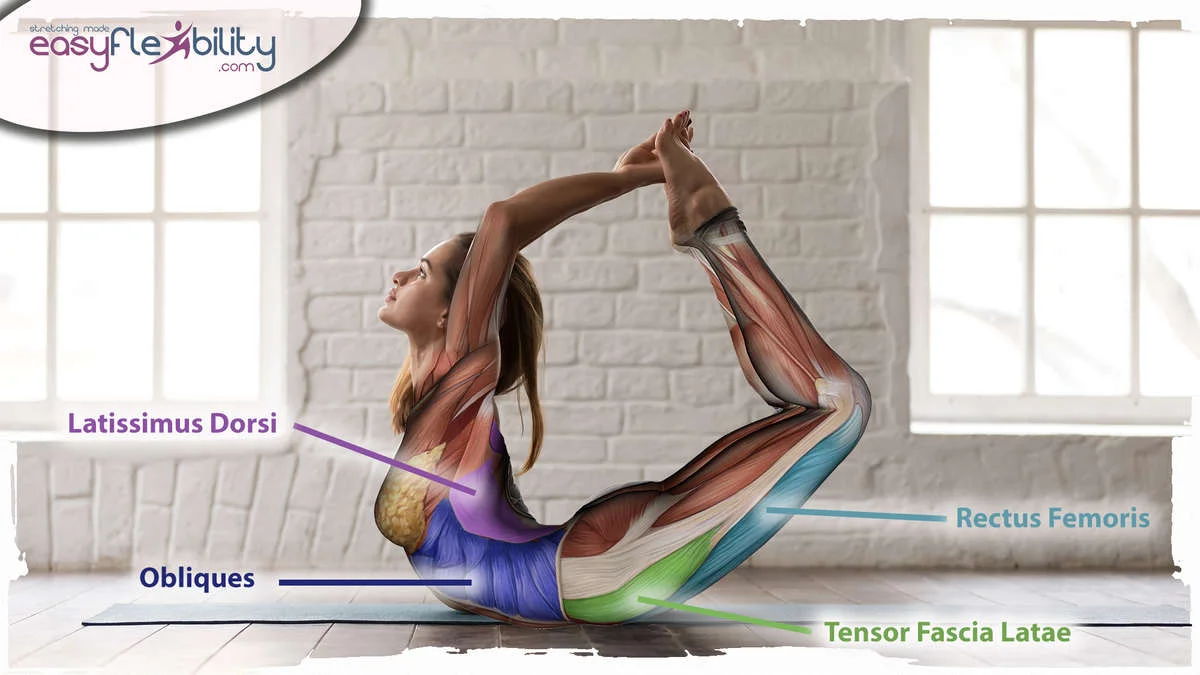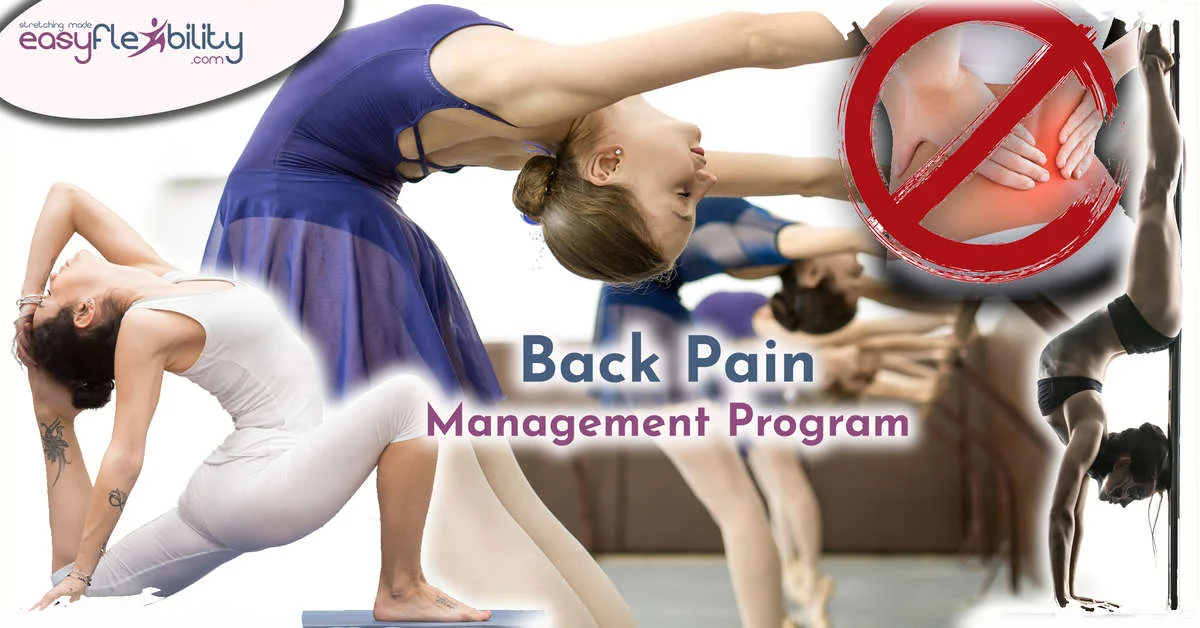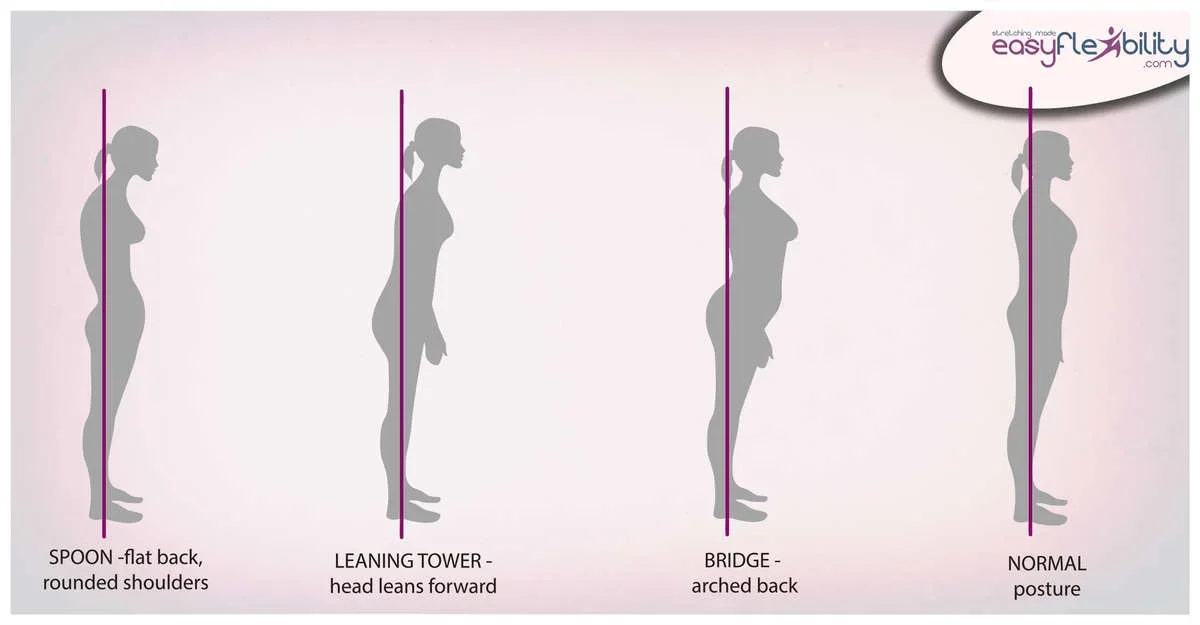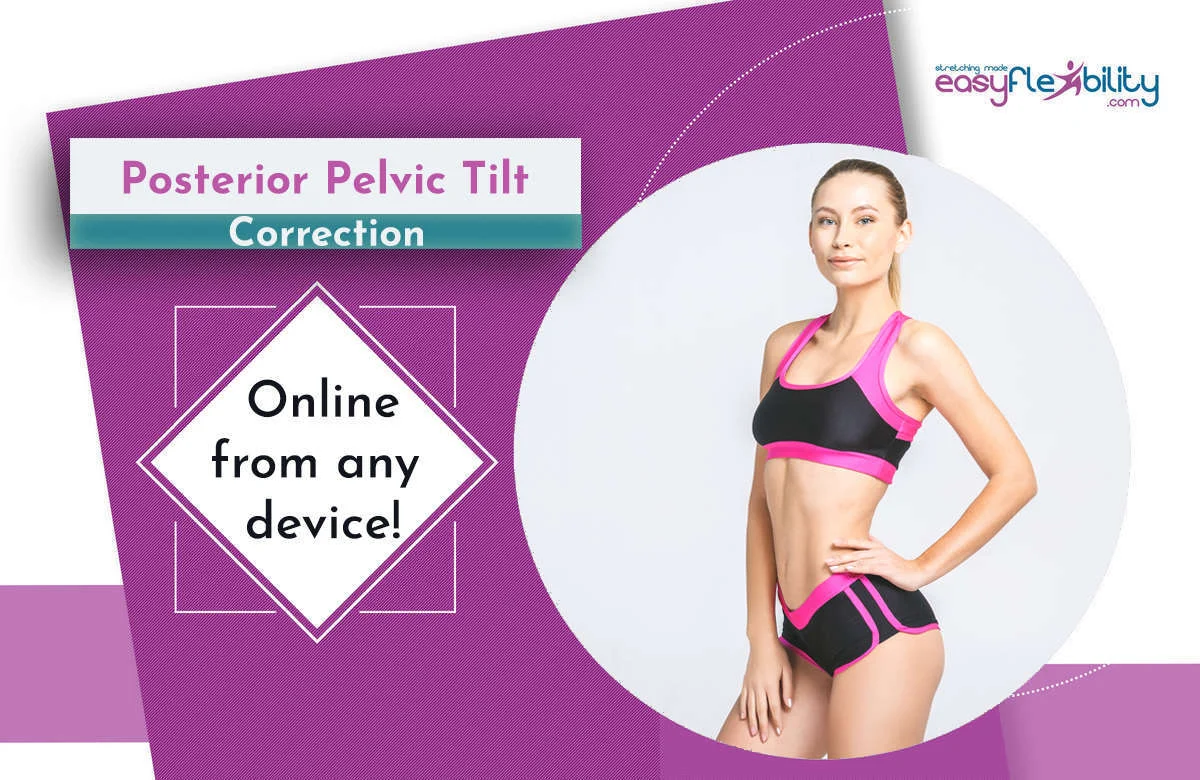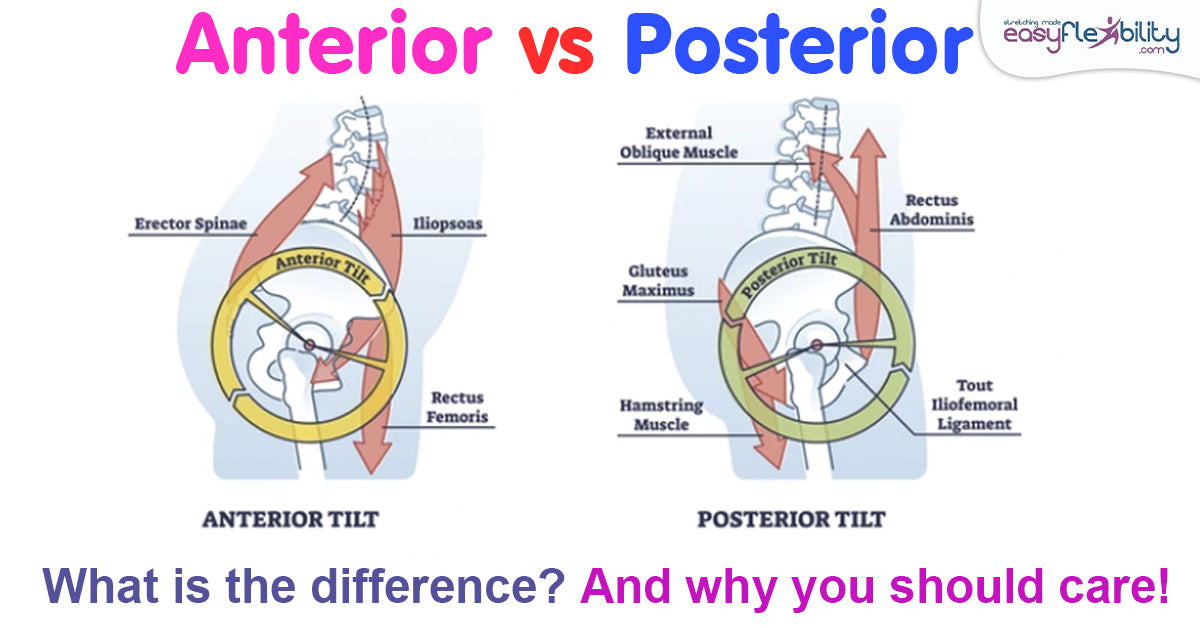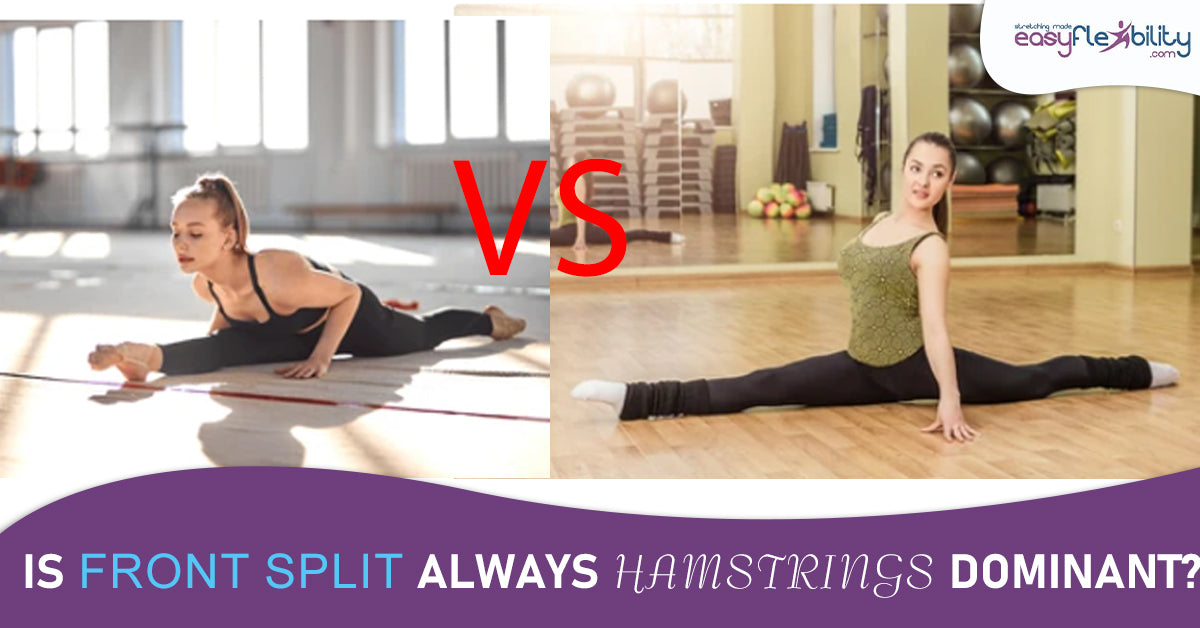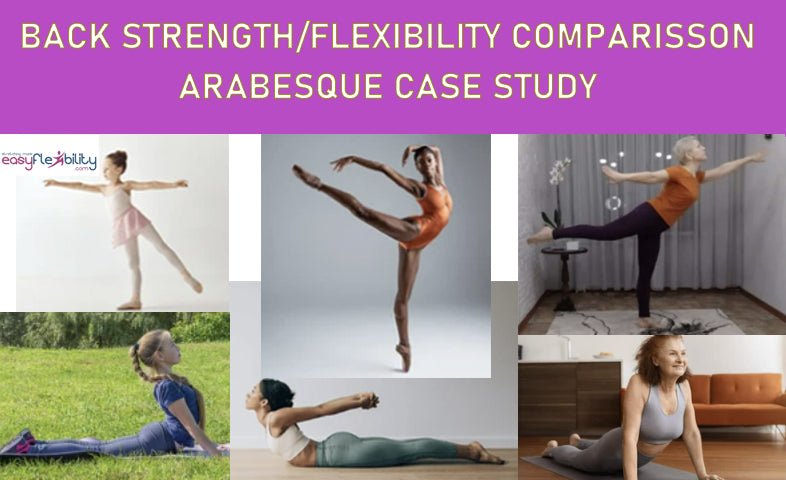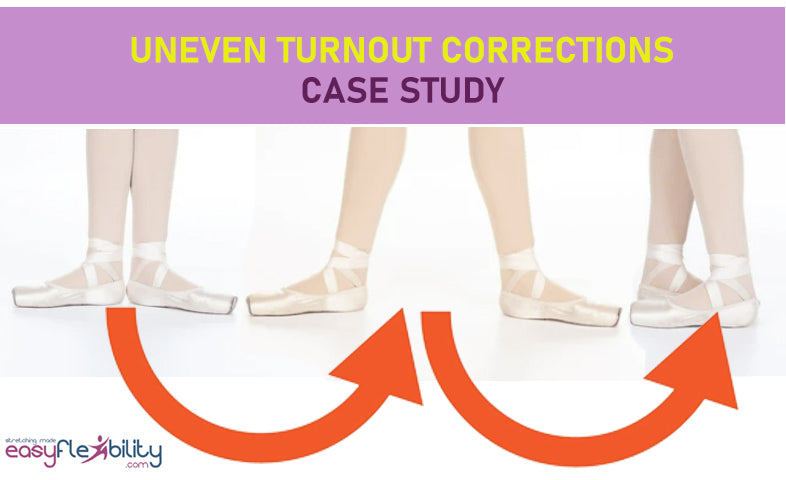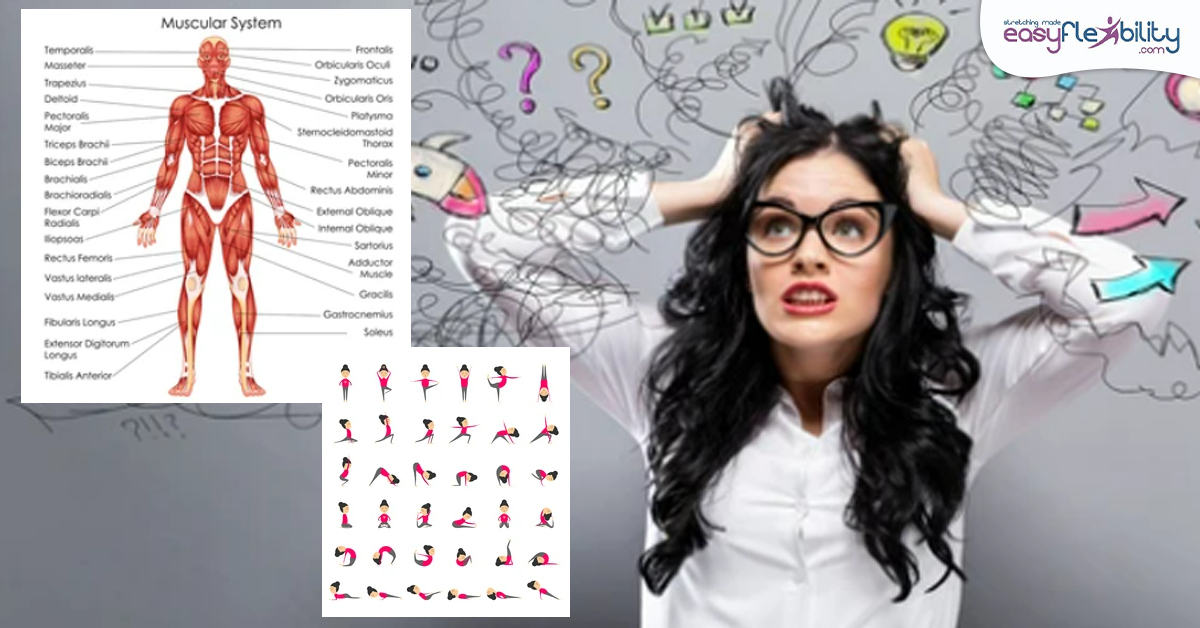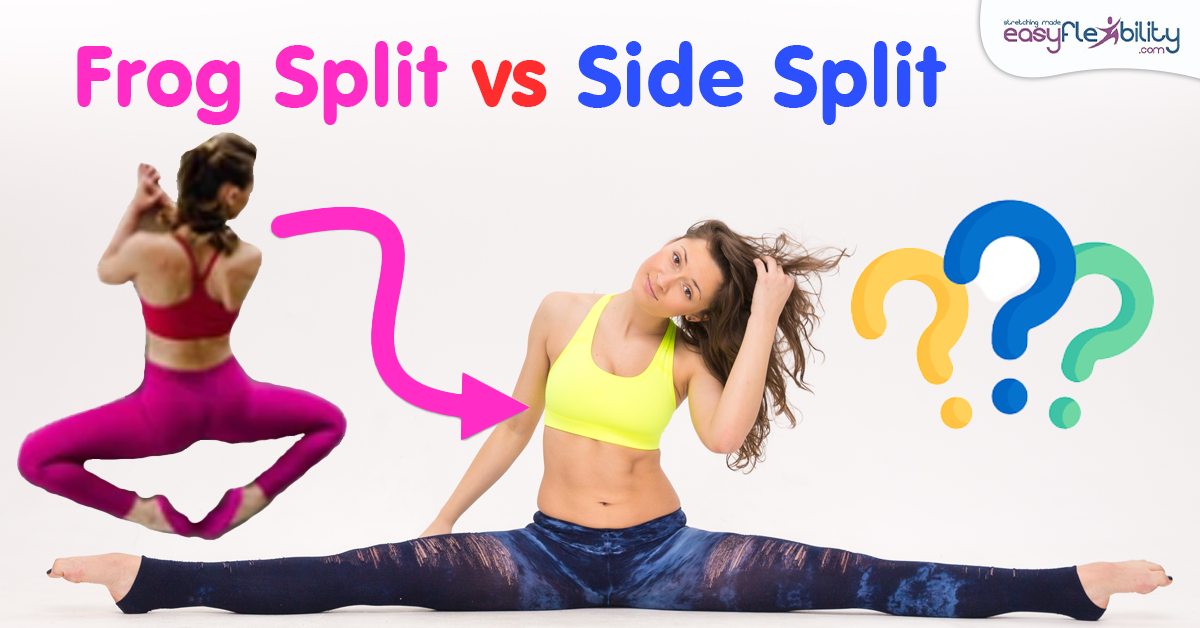Back stretching vs back bending vs back pain training. What’s the difference?
Posted by Paul Zaichik on
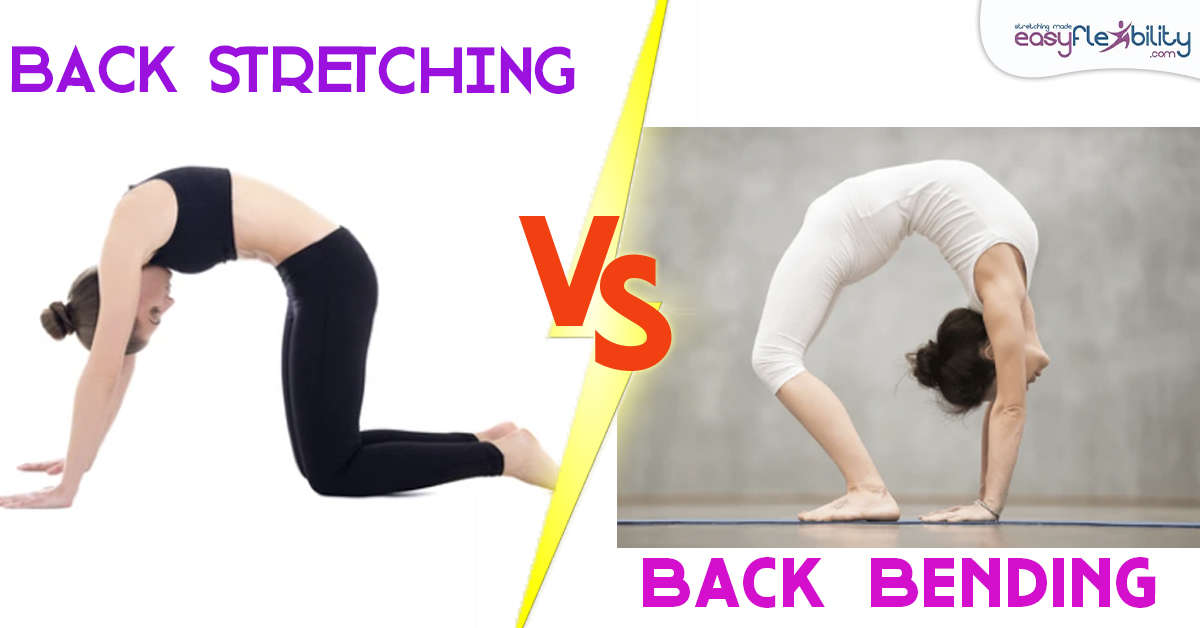
Back stretching vs back bending vs back pain training. What’s the difference?
I’ve decided to make this blog post because frequently people ask us for a back program, and they are not specific about it. So, we have to figure out what a person wants or needs.
When someone says that they're looking for a back program, sometimes they are looking for a back bending program, sometimes they are looking for a back stretching program, and sometimes they're looking for a back pain release program.
And there are also cases when, people are looking for a tilt program, such as anterior pelvic tilt or posterior pelvic tilt, where the lower back is too rounded or too straight. And every so often people ask for a program for their upper back, but what they are really looking for is to improve their posture.
When someone says that they're looking for a back program, sometimes they are looking for a back bending program, sometimes they are looking for a back stretching program, and sometimes they're looking for a back pain release program.
And there are also cases when, people are looking for a tilt program, such as anterior pelvic tilt or posterior pelvic tilt, where the lower back is too rounded or too straight. And every so often people ask for a program for their upper back, but what they are really looking for is to improve their posture.
If you are new to flexibility training or even if you know a little bit about flexibility training programs, not necessarily, the EasyFlexibility training programs, but training programs in general, this blog post may benefit you.
If you are new to EasyFlexibility and don't know anything about Paul Zaichik's EasyFlexibility system let us quickly tell you what our system is all about.
EasyFlexibility has been developed by Paul Zaichik a flexibility expert with over 30 years experience in the field. His Zaichik Stretching Techniques have taken the world by storm and have changed lives of thousands of people worldwide. The principle of Paul Zaichik's system is to bring PAIN FREE, SAFE and FAST flexibility to all regardless of age and physical fitness background.
We can fill hundreds of pages explaining what the Zaichik Stretching Techniques are, or you can try one out for yourself RIGHT NOW!
We can fill hundreds of pages explaining what the Zaichik Stretching Techniques are, or you can try one out for yourself RIGHT NOW!
Zaichik Stretching Techniques are unlike anything you’ve ever done before!
Take 6 seconds and try this technique right now! This example focuses on the shoulder because it’s easy to do standing. Watch your shoulder get flexible in 6 seconds, try it now!
What is Back Bending? What does it mean to do a Back Bend?
In short, back bending is, basically folding your body back. It might be a cobra position. It might be a bridge position. It might be any other back bending position. But that's what back bending is.
BACK BENDING COMBO - YOUR ULTIMATE BACK FLEXIBILITY GUIDE!
Unlocking supreme back flexibility isn't just for show; it's the secret sauce behind the enviable grace of those with 'cat-like' agility. Imagine bending, twisting, and stretching with the ease of a feline, captivating onlookers with your fluid movements. Sounds impressive, right?
But let's face it, the journey to limberness is often paved with groans over back aches and creaky joints. Fear not, for this odyssey doesn't have to be a Herculean ordeal.
Here's the scoop: mastering the art of the Back Extension isn't just for the elite athletes among us. Dancers, gymnasts, figure skaters, wrestlers, and even the weekend sports warriors—everyone stands to gain from a spine that bends like a willow.
Enter the game-changing Zaichik Stretching Techniques, your secret weapon to unlocking flexibility fast, minus the "ouch" factor. Ready to astound yourself with the flexibility feats you'll achieve? Plus, think of the health perks as the cherry on top of your newfound agility. Let the bending begin!
But let's face it, the journey to limberness is often paved with groans over back aches and creaky joints. Fear not, for this odyssey doesn't have to be a Herculean ordeal.
Here's the scoop: mastering the art of the Back Extension isn't just for the elite athletes among us. Dancers, gymnasts, figure skaters, wrestlers, and even the weekend sports warriors—everyone stands to gain from a spine that bends like a willow.
Enter the game-changing Zaichik Stretching Techniques, your secret weapon to unlocking flexibility fast, minus the "ouch" factor. Ready to astound yourself with the flexibility feats you'll achieve? Plus, think of the health perks as the cherry on top of your newfound agility. Let the bending begin!
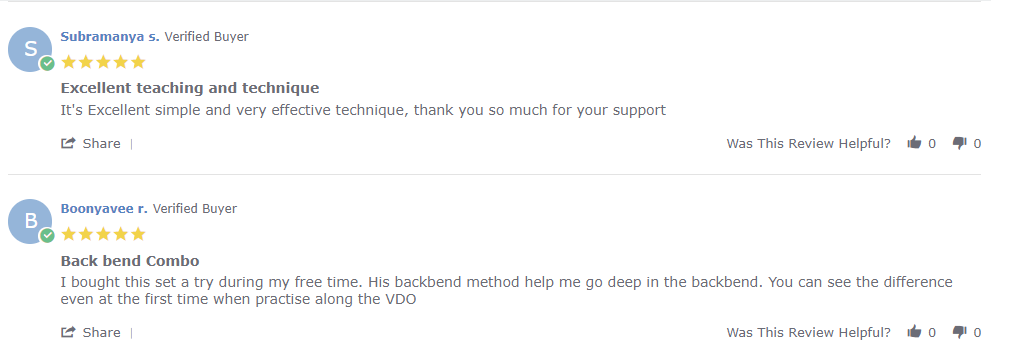
What is Back Stretching? What does it mean to Stretch your back?
Back stretching usually means bending forward to stretch the muscles of the back, and in this case, we're talking about the extensors of the spine primarily. Or back stretching means decompression of the spinal column.
And a physical therapist or a chiropractor might have a device which will pull
your upper body and lower body in opposite directions. And sometimes, you
can hang on a bar with your feet not touching the ground. Or you can hang upside down with special boots which will also stretch your back. And this will actually decompress your spine.
And a physical therapist or a chiropractor might have a device which will pull
your upper body and lower body in opposite directions. And sometimes, you
can hang on a bar with your feet not touching the ground. Or you can hang upside down with special boots which will also stretch your back. And this will actually decompress your spine.
What is back pain? Are you really having back pain? Are
you looking for a program to help ease your back pain or do you mean something else entirely when you say “I need a back pain program”?
you looking for a program to help ease your back pain or do you mean something else entirely when you say “I need a back pain program”?
Now, if you're looking for a back program for back pain, that's a different story, because it involves strengthening and stretching the muscles around your lower back and your hips.
Because most people ask for a lower back pain program. But even with lower back pain, in some cases, the students think they need to go beyond just the core of the body and the hips into other areas as well.
Banish Back Pain in Just 15 Minutes a Day: At-Home Lower Back Focus Training with Paul Zaichik
Hey there! Guess what? You didn't just stumble here by accident. You're on a quest for something epic: a life without that nagging lower back pain. Imagine getting flexible and strong, without the grimace or groan, zipping through to pain-free nirvana swiftly!
Dive into this online treasure trove where Paul Zaichik will guide you through a workout that's all about boosting your lower back's happiness. We're talking about stretching and strengthening the muscle crew around your lumbar to bring balance and safe vibes to your spine.
Ready to kick back pain to the curb in less than 15 minutes a day?
This online course is your golden ticket to a series of smooth moves in a progressive program aimed at erasing back pain and warding off future sneak attacks!
Dive into this online treasure trove where Paul Zaichik will guide you through a workout that's all about boosting your lower back's happiness. We're talking about stretching and strengthening the muscle crew around your lumbar to bring balance and safe vibes to your spine.
Ready to kick back pain to the curb in less than 15 minutes a day?
This online course is your golden ticket to a series of smooth moves in a progressive program aimed at erasing back pain and warding off future sneak attacks!
Here's a sneak peek of what's in store:
- A muscle magic sequence for those aching backs and for anyone keen on keeping their back in tip-top shape for the long haul.
- A quick, 15-minute morning routine to supercharge your day.
- A longer, 25-minute routine to deeply stretch your lower back and its buddies.
- Muscle-building secrets to guard your lower back and master the lumbar arch.
- Zen breathing and mind tricks to boost your daily mojo and overall well-being.
Take the reins on your back's future and step into a life of ZERO pain. Discover how straightforward moves can revolutionize your lumbar health and comfort. Let's do this!
Or are you looking for a Perfect Posture Program when
you’re asking for a back stretching program?
you’re asking for a back stretching program?
Now, if someone is looking for a good posture program, usually people ask for a back program, but they don't mean necessarily back bending or back stretching.
They mean making their body comfortable and strong where their upper middle back is not hunched forward, rotated or bent to the side. And that reference to the back training or back program is a posture program.
They mean making their body comfortable and strong where their upper middle back is not hunched forward, rotated or bent to the side. And that reference to the back training or back program is a posture program.
Having a perfect posture is one of those things that everyone talks about, yet very few know how to get.
Often general terms like "Do more Yoga", or "Take Pilates Class" come to mind.
The problem?
Too many exercises and non are specific enough to improve the way a person bears his or her body.
We fix these issues!
The problem?
Too many exercises and non are specific enough to improve the way a person bears his or her body.
We fix these issues!
We fix this issue by focusing on all aspects of poor posture.
- Head thrown back
- Chin stuck forward
- Upper and middle back form a convex ball
- Arm rotated in
- Scapula's protracted, etc.
This program will help you get a Perfect Posture!
The combination of proprietary Zaichik Stretching and strengthening exercises reverses the effect of gravity and years of self neglect.
Each section of the body concentrated on and taken care off piece by piece.
It takes at most few weeks before a person begins to look better and most importantly to feel better.
Each section of the body concentrated on and taken care off piece by piece.
It takes at most few weeks before a person begins to look better and most importantly to feel better.
Do you have Lordosis or Kyphosis and are looking for
stretching and back bending program to help you with these issues?
stretching and back bending program to help you with these issues?
Finally. Sometimes people ask for a back program or to help with their back are actually looking to balance the curve in their lower back.
Whether it's an access curve such as Lordosis. Or their back is flat and they want to add a little bit of curvature to the lower back.
Whether it's an access curve such as Lordosis. Or their back is flat and they want to add a little bit of curvature to the lower back.
Transform Your Posture: Say Goodbye to the 'No Butt Syndrome' and Hello to a Stronger, Curvier Lower Back!
Our program revitalizes your figure by restoring the natural curve of your lower back, reducing stress and danger during everyday activities like squatting and lifting. With Zaichik Stretching and unique posture strengthening, not only will your back thank you, but you'll also see your butt reappear, stronger and more defined than ever!"
Back Bending vs Back Stretching a deeper dive.
Back bending and back stretching are not the same. But part of the reason why I'm writing this article is because, oftentimes people use these terms interchangeably. So, let’s clarify the difference.
If you are bending backward, you are stretching the muscles in front of your body. You might be strengthening the muscles in the back of your body. You might be strengthening the muscles in front of your body, or both, depending on what you are looking for.
In the EasyFlexibility system, the supporting exercises or the strength exercises that back up the flexibility depend heavily on the skill. Meaning that for one skill, you might strengthen the antagonist muscles, and then for another skill you might strengthen the agonist muscles.
For example, in Back bending you've stretched the muscles in front of your body, but which ones you would strengthen depends on what pose or what are you doing with that back bending?
If someone is doing a high cobra, which is a cobra where the feet touch the head, the muscles that will be stretched would be rectus abdominis, obliques, all six hip flexors, all four adductors, the quadriceps. And depending on the head position, the flexors of the neck.
Since you are reading this article on the EasyFlexibility blog, you either know this or you're about to find out that in the EasyFlexibility system we don't just hold a position and hope for the best. We isolate muscles based on the muscles’ actions and that speeds up the flexibility progress.
Now, if your back bending involves the arms, for example, if you're doing the bridge, you will be stretching other muscles. You'll be stretching your rhomboids. You'll be stretching your teres major. Depending on how you position your arms, you will be stretching your subscapularis, posterior deltoid, teres minor, teres major, latissimus dorsi. A lot of these muscles are located in the back, but some like pectoralis minor or pectoralis major, the sternal part, is located in the front.
Now, if you are looking to stretch your back according to the definition, if you look into stretching the muscles in your back, you will be stretching the spinal extensors. You might be stretching quadratus lumborum depending on what you do and if your arms are involved.
Interestingly, you will be stretching the same muscles that you stretch in a bridge. In other words, if you're hanging off the bar, you're stretching the same muscles that you are if you're doing a back bridge. But if your arms are not involved, then the back bending and back stretching are completely different.
An example of back stretching might be lying on your back and doing a crunch. This is a reciprocal inhibition for the back. You are contracting the muscles in front and stretching the muscles in the back. If you use your arms to hold yourself in a stretched position, let's say you're trying to pull your head to your knees, then, it now becomes a passive stretch for your back.
It is not common among athletes to have tight back muscles. When it comes to forward stretching or stretching of the back muscles, it happens but it's not common. Among people who are not active it's more common.
When athletes are looking for flexibility, in terms of stretching forward, they're usually not looking for flexibility in their back. They're looking for flexibility in their hamstrings and glutes and other muscles that restrict forward bending. And the reason for that is because of the way basic conditioning exercises are designed in athletics.
Because most people have poor posture and day to day activities involve movement of the back, most do not have a problem with flexibility of their spinal extensors. Of course, some people are in sports where they may want an extreme flexibility in their spinal extensors beyond what they already have.
For example, grapplers. But for most people, it's not really an issue. The issue is more about back bending, if someone needs that.
Not everyone needs that in their sports or activities. Some people don't need it,
but they want it, and that's another story. And for most people, again, it's forward bending from the hips. That's where the restriction is, not forward bending from the spine.
I hope that this post gave you a brief overview of the difference between back bending and back stretching, and will help you understand what you are actually looking for. If you have any questions feel free to reach out to us by clicking here and we’ll be more than happy to assist you in finding the right program for your particular issue.
If you are bending backward, you are stretching the muscles in front of your body. You might be strengthening the muscles in the back of your body. You might be strengthening the muscles in front of your body, or both, depending on what you are looking for.
In the EasyFlexibility system, the supporting exercises or the strength exercises that back up the flexibility depend heavily on the skill. Meaning that for one skill, you might strengthen the antagonist muscles, and then for another skill you might strengthen the agonist muscles.
For example, in Back bending you've stretched the muscles in front of your body, but which ones you would strengthen depends on what pose or what are you doing with that back bending?
If someone is doing a high cobra, which is a cobra where the feet touch the head, the muscles that will be stretched would be rectus abdominis, obliques, all six hip flexors, all four adductors, the quadriceps. And depending on the head position, the flexors of the neck.
Since you are reading this article on the EasyFlexibility blog, you either know this or you're about to find out that in the EasyFlexibility system we don't just hold a position and hope for the best. We isolate muscles based on the muscles’ actions and that speeds up the flexibility progress.
Now, if your back bending involves the arms, for example, if you're doing the bridge, you will be stretching other muscles. You'll be stretching your rhomboids. You'll be stretching your teres major. Depending on how you position your arms, you will be stretching your subscapularis, posterior deltoid, teres minor, teres major, latissimus dorsi. A lot of these muscles are located in the back, but some like pectoralis minor or pectoralis major, the sternal part, is located in the front.
Now, if you are looking to stretch your back according to the definition, if you look into stretching the muscles in your back, you will be stretching the spinal extensors. You might be stretching quadratus lumborum depending on what you do and if your arms are involved.
Interestingly, you will be stretching the same muscles that you stretch in a bridge. In other words, if you're hanging off the bar, you're stretching the same muscles that you are if you're doing a back bridge. But if your arms are not involved, then the back bending and back stretching are completely different.
An example of back stretching might be lying on your back and doing a crunch. This is a reciprocal inhibition for the back. You are contracting the muscles in front and stretching the muscles in the back. If you use your arms to hold yourself in a stretched position, let's say you're trying to pull your head to your knees, then, it now becomes a passive stretch for your back.
It is not common among athletes to have tight back muscles. When it comes to forward stretching or stretching of the back muscles, it happens but it's not common. Among people who are not active it's more common.
When athletes are looking for flexibility, in terms of stretching forward, they're usually not looking for flexibility in their back. They're looking for flexibility in their hamstrings and glutes and other muscles that restrict forward bending. And the reason for that is because of the way basic conditioning exercises are designed in athletics.
Because most people have poor posture and day to day activities involve movement of the back, most do not have a problem with flexibility of their spinal extensors. Of course, some people are in sports where they may want an extreme flexibility in their spinal extensors beyond what they already have.
For example, grapplers. But for most people, it's not really an issue. The issue is more about back bending, if someone needs that.
Not everyone needs that in their sports or activities. Some people don't need it,
but they want it, and that's another story. And for most people, again, it's forward bending from the hips. That's where the restriction is, not forward bending from the spine.
I hope that this post gave you a brief overview of the difference between back bending and back stretching, and will help you understand what you are actually looking for. If you have any questions feel free to reach out to us by clicking here and we’ll be more than happy to assist you in finding the right program for your particular issue.
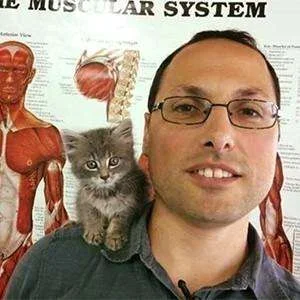
About the Author:
Paul Zaichik is an Exercise Science Expert, author of multitude of books, and the creator of Zaichik Stretching Technique (formely known as Kinesiological Stretching Technique). His speciality is flexibility training as well as body weight conditioning. His innovative method is designed to have maximum carry over into specific athletic techniques. Paul is the author of books and DVD’s on the topic of flexibility, martial arts and bodyweight training. Over the years, Paul Zaichik has worked with a variety of individuals including athletes, entertainers, and military personnel. His ElasticSteel Method of Athletic Conditioning programs, EasyFlexibility Programs and Zaichik Stretching Techniques are used world wide by both professional and amateurs with great success.
Share this post
- 0 comment
- Tags: Back, back bending, Back Bridge, back extension, Back flexibility, back pain, backbending
0 comment

